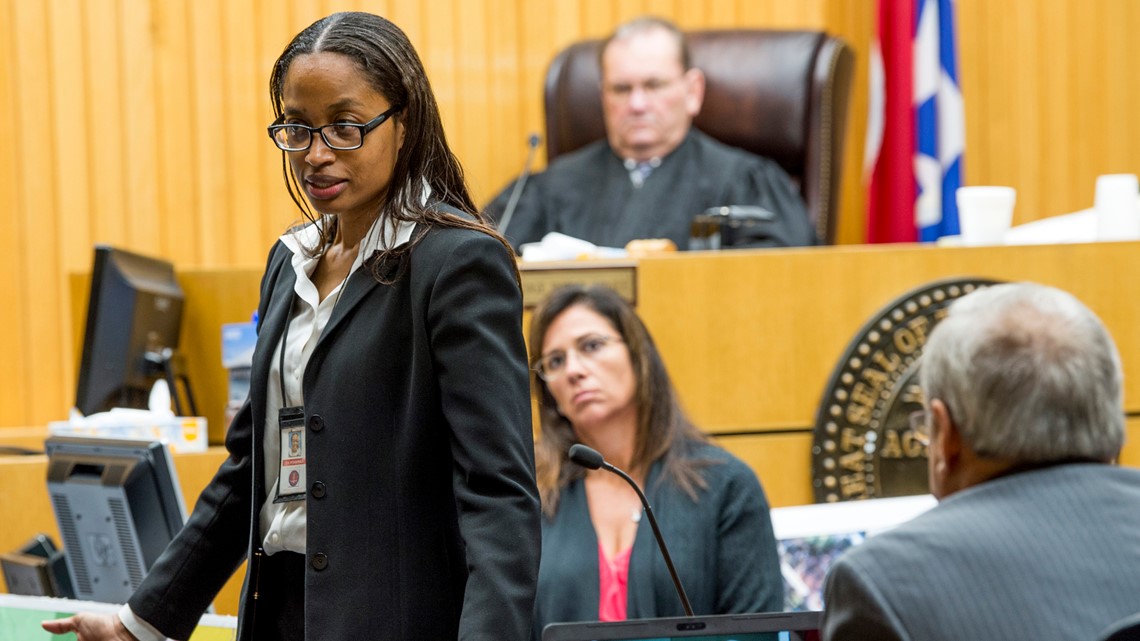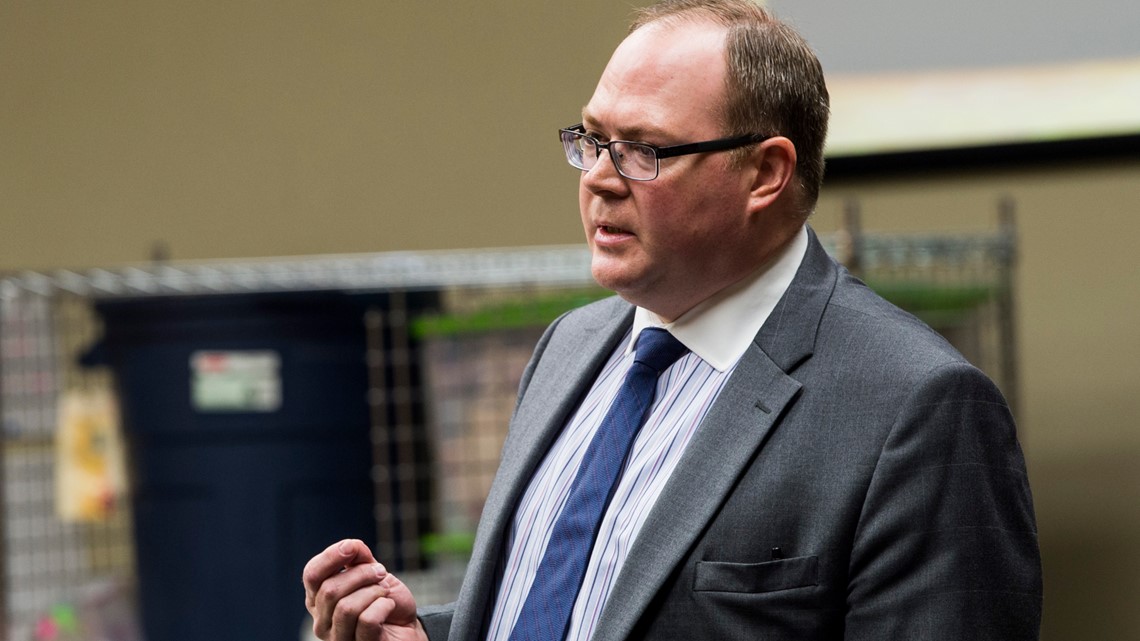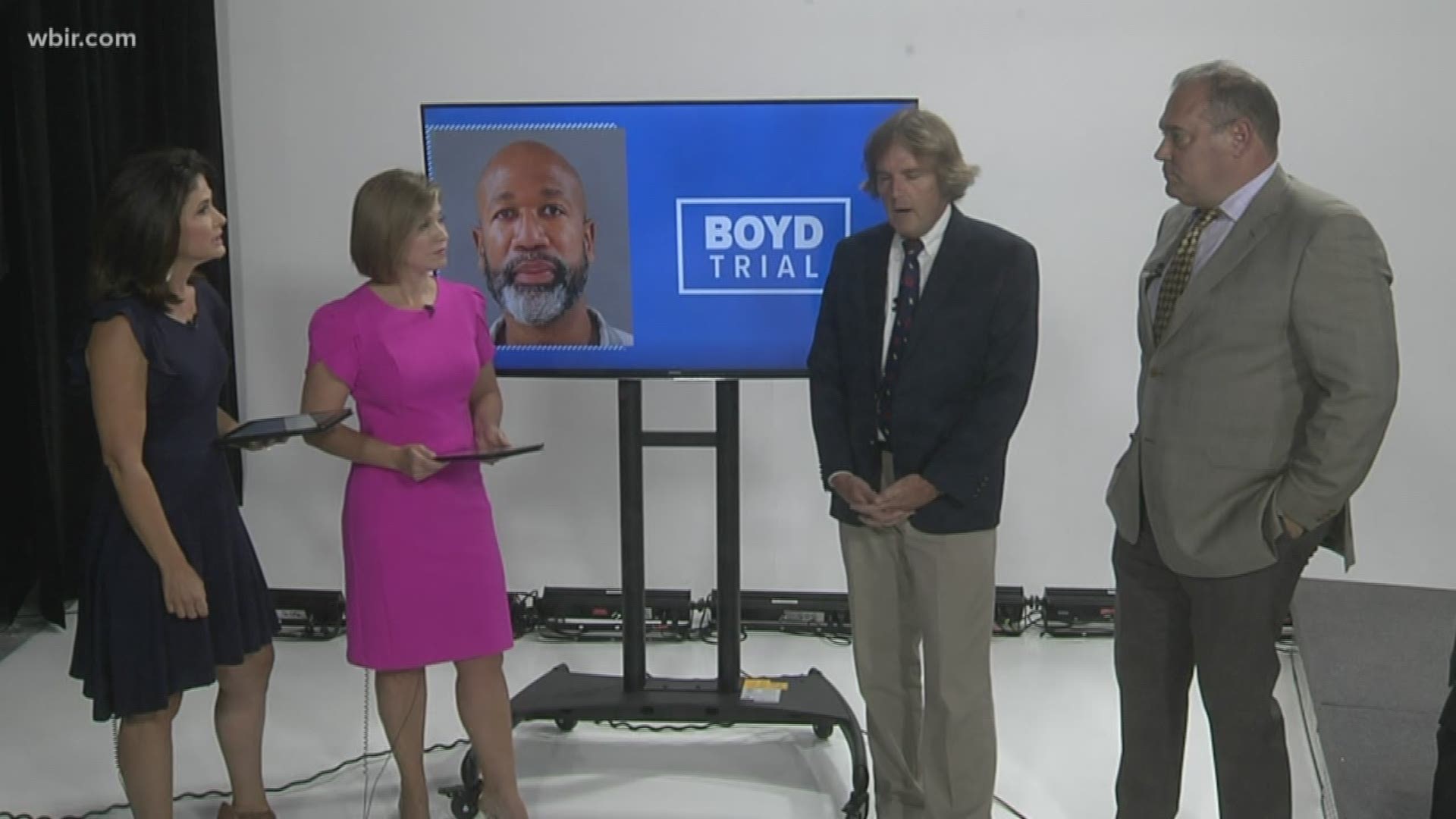KNOXVILLE, Tenn — Twelve years after the murder of a young Knox County couple, Eric D. Boyd, 47, faces charges including kidnapping, rape and murder. He's accused of having a direct role in the attacks on Chris Newsom, 23, and Channon Christian, 21, in January 2007.
Friday marked day four of his trial. Get full coverage here.
WBIR will carry the trial live on WBIR.com, the WBIR app, and the WBIR YouTube channel. The live stream will not appear when court is not in session.
HAPPENING NOW
The jury has ended its deliberations for the day. They will be back at it Tuesday morning at 9 a.m.
They retired to the jury room to begin deliberations shortly before 2 p.m. Monday. They've got a lot of evidence to review, instructions to consider and counts -- 36 -- to weigh against Eric Boyd, 47.
The day began about 10:03 a.m. Monday. By noon, the judge was close to handing the case to the jury for deliberation. He spent almost two hours reviewing the instructions with them.
The prosecution and the defense delivered their closing arguments Monday morning.
Prosecutor Phil Morton went first, followed by defense attorney Clinton Frazier. Prosecutor TaKisha Fitzgerald then got the chance to conclude the state's argument.
Knox County Criminal Court Judge Bob McGee then instructed the jury on how they were to proceed in considering the evidence against Boyd.
PROSECUTION'S FINAL ARGUMENT
Fitzgerald, in her closing comments to the jury just before noon, said she knew the jurors would have many questions about the crimes and that they'd have a natural urge to try to resolve those question.
Instead, Fitzgerald urged the panel to focus on what had been proved against Boyd.
For example, Boyd's cousin has previously confirmed she loaned Boyd her Pontiac in the days before the carjackings of Christian and Newsom, she said. That car was used to get to the apartment complex where the victims were standing, and it was spotted outside Davidson's house afterward, authorities say.
Fitzgerald said all the defendants, including Boyd, were responsible for the criminal actions of the group because they worked together in committing the crimes.


DEFENSE'S ARGUMENT
Frazier told jurors there was bountiful evidence showing the involvement of co-defendants Lemaricus Davidson, Letalvis Cobbins, Vanessa Coleman and George Thomas.
And they've been convicted and sentenced to prison, he said.
The evidence included Davidson's prints on various items owned by Christian and Coleman's prints on cloth used to bind the victims.
But the state didn't have direct physical evidence linking Boyd to the crimes, Frazier.
"There is no physical evidence that ties Eric Boyd to the rapes, to the murders, to the thefts, to the robberies," Frazier said.
Addressing the state's key, new witness -- George Thomas -- Frazier said Thomas tried to minimize his own involvement and shift focus onto Boyd.
Frazier reminded the jury that 12 years ago, the state looked at its evidence and decided not to charge Boyd as a direct participant in the killings. And then last year, the state chose to make a "devil's bargain" with Thomas to try to build a case against Boyd.
The attorney also keyed in on specific testimony that tried to link his client to the crimes.


For example, Frazier tried to raise doubts about the testimony of Xavier Jenkins, a Waste Connections worker who recalled seeing the white Pontiac Sunbird that Boyd borrowed from his cousin on the night of the kidnappings. He testified he recalled seeing it by Davidson's Chipman Street house.
Boyd drove the Sunbird to Davidson's house on Chipman Street and then drove Cobbins and Davidson to the apartment complex where Christian and Newsom were kidnapped, according to authorities.
Frazier said the jury would have to decide whether it was believable that Jenkins never used media reports about the crime to help form his memories of what he saw outside the Chipman Street house after the kidnappings.
The attorney also attacked Thomas's testimony. George Thomas gave a differing version of what happened to investigators in Kentucky after his arrest in 2007 compared to what he said last week on the witness stand.
Thomas also claimed he heard nothing while Christian was being raped by both his good friend Cobbins and Cobbins' brother in the Chipman Street house.
"Does it make any sense to anybody sitting in here that that man could have been at that tiny, little house while Channon was being brutalized and raped and that he didn't see anything, he didn't hear anything while his best friend was feet away raping her?" Frazier said.
The attorney argued that Newsom actually was attacked by the other defendants, and not his client, while they were inside the Chipman Street house. Most of what happened to both victims, he said, took place at the house.
In Newsom's case, he said, it's not believable that Boyd took him out of the house and to railroad tracks by himself, Frazier said.
He also argued that while the jury may be angry about what happened to Christian and Newsom, they shouldn't take it out on Boyd. Davidson, Coleman, Thomas and Cobbins have been rightfully convicted, he said.
But it wouldn't be right for the jury to take out its anger for their crimes and convict Boyd.
"We're asking you to hold the state to its burden, and I’m asking you to find Eric Boyd not guilty," Frazier said as he concluded his argument.
PROSECUTION'S OPENING ARGUMENT
Earlier Monday morning, the state gave the first part of its closing statement. Prosecutor Phil Morton spoke for about 45 minutes.
He reminded the jury that Boyd's cousin has previously testified she loaned her Pontiac to Eric Boyd the weekend of the killings.
On the stand last week, she suddenly couldn't recall loaning the vehicle to him, but her previous testimony in Boyd's federal trial in 2008 can still be considered by the jury.
They've got a transcript of her testimony to review.
Other witnesses including Xavier Jenkins also recalled seeing that white Sunbird outside the home on Chipman Street.
Morton also reminded the jury of defendant George Thomas's testimony last week. Thomas, an eyewitness in the Chipman Street house, offered some of the state's newest and perhaps most damning evidence.
Thomas said he went with Boyd while Newsom was their captive. They drove in Christian's Toyota 4Runner to a remote area nearby in the dark, and Boyd led Newsom off while Thomas said he stayed behind.
Thomas testified he then saw three gunshot flashes in the dark, which the state suggests was the moment Newsom was shot and killed.
Thomas also testified he then saw Boyd with a gas can and then heard a whoosh in the dark, presumably as Newsom's body was set on fire. Newsom was found dead lying on his back along railroad tracks not far from the Chipman Street house.
Morton explained to the jury that the prosecution didn't have video available to show everything that happened in January 2007. They can't detail everything that happened from the time of the carjacking the night of Jan. 6, 2007, until Christian's body was found, he said.
"We can’t answer minute by minute, hour by hour all the things that went on inside that house," he said.
Morton said Boyd played a key role in providing the car used to get to Washington Ridge Apartments off Washington Pike from which Christian and Newsom were kidnapped.
Davidson knew someone at the complex and had made up his mind to carjack someone, evidence has shown.
"That theft became a robbery at Washington Ridge Apartments, but it didn't stop there," Morton said.
Jurors also need to keep in mind that Boyd can be responsible for the conduct of others if he was a party to what happened, Morton said. Boyd didn't have to directly commit any of the crimes to be convicted so long as he was involved and a party to the crimes, the prosecutor said.
If someone enters into a "scheme", Morton said, they then take on the responsibility for what crimes follow.
Boyd had options that could have spared him prosecution, Morton said. He could have alerted police. He didn't do that.
Instead, he provided the car used in the carjacking, according to the evidence. And he was seen by Thomas leading Newsom back into the Chipman Street house after the carjacking, the prosecutor said.
Morton acknowledged that Thomas didn't tell everything he knew last week.
"Did he hold back?" Morton asked rhetorically. "Sure, he did."
But Thomas did provide more details to help fill in the pieces of what happened to Christian and Newsom, Morton said.
KEY TAKEAWAYS FROM TODAY
- Clinton Frazier, Boyd's defense attorney, moves to dismiss the case because he believes the State has not presented enough evidence to back up the charges against Boyd.
- Boyd decides not to testify in the case
- State, defense presented closing arguments, with the prosecution urging the jury to consider Boyd's responsibility as a member of a group involved in the crimes and the defense insisting there was no direct evidence linking Boyd to what happened.
- Jury deliberation began Monday afternoon and was expected to take a number of hours as jurors waded through the proof, their instructions and the more than 30 counts against Boyd.
The State role-plays
The State had its investigator read a federal testimony of Adrienne Mathis, so the jury can hear it out loud. She previously testified that she let Boyd borrow her white Pontiac which links Boyd to the Chipman Street home the night of the crime. Mathis testified on Tuesday that she did remember if she let Boyd borrow the car or not.
The State submits three more pictures into evidence and rests its case. The jury leaves the room.
The defense moves to dismiss the case
Clinton Frazier, Boyd's defense attorney, moved to dismiss the case because he believes the State has not presented enough evidence to back up the charges against Boyd. The State said to the judge that the crimes were committed against the victims. Fitzgerald added that the case established that there were five people responsible for the crimes. The prosecution's evidence against Boyd is Jenkins seeing the white car at the Chipman house which was the same car lent to Eric Boyd and the testimony of George Thomas.


